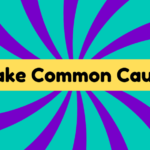The phrase "upside down" means something is in disarray or flipped over, highlighting chaos in life. Its origins trace back to the 19th century, first noted in 1866 and appearing in biblical texts. You might say your life feels "upside down" during tough times, or use it in finance to describe when debts exceed assets. Common phrases include "world turned upside down" to express extreme disruption. This term reflects both personal and societal challenges, remaining relevant in discussions about modern turmoil. If you keep exploring, you'll uncover more fascinating insights about its usage and significance.
Synonyms
When you think of the term "upside down," several synonyms come to mind that capture its essence. These words not only convey the idea of physical inversion but also shine a light on inverted concepts and chaotic situations we often encounter in life:
- Reversed
- Inverted
- Turmoil
- Disarray
Each synonym offers a unique perspective, reminding you that order can flip to chaos in an instant. The chaotic situations we face, whether in personal life or in finance, can leave you feeling completely unsettled. Understanding these synonyms helps clarify what being "upside down" truly means, and reveals the underlying truths about disorder and confusion. By exploring these variations, you can better grasp the complexities of life's challenges and embrace innovation with a fresh outlook.
Example of Sentences
Upside down situations can often feel overwhelming and chaotic. You might encounter this imagery in various aspects of life, revealing deeper cultural interpretations. Consider these examples:
- A book turned upside down to obscure its title.
- Glasses placed upside down in a drying rack, maximizing airflow.
- Your hectic lifestyle making everything feel completely upside down.
- A car loan surpassing the vehicle's value, creating financial disarray.
Each example showcases how the phrase transpires beyond mere object inversion, capturing disorder that resonates with many folks today. It's essential to recognize how these upside down scenarios reflect our challenges, inviting us to navigate the complex layers of modern life. Understanding these dynamics can give direction when things seem upside down.
Origin
The phrase "upside down" traces its roots back to the 19th century, where its usage was relatively rare. Initially, it appeared in specific contexts, but it gained traction over time, particularly in literary settings. The adjectival usage first showed up in 1866, reflecting a shift towards more creative expressions. You might find biblical references, particularly in the 14th-century Wycliffe-Purvey version of Matthew 21:12, where the term indicated disruption of order. This historical usage highlights how language evolved from formal religious texts to everyday vernacular. Understanding the phrase's origins encourages a deeper appreciation for its significance. It's not just a casual expression; it carries layers of meaning shaped by cultural and historical contexts that still resonate today.
Collocations
Collocations involving "upside down" often enhance its meaning and usage in various contexts. By utilizing specific upside down expressions and upside down idioms, you can convey more vividly the feelings of chaos or confusion. Consider these vivid phrases:
- "Turned upside down" to express a disrupted routine.
- "Life turned upside down" signaling a major shift.
- "Upside down finances" indicating economic instability.
- "World flipped upside down" encapsulating overwhelming situations.
Using these collocations not only adds depth but also clarity, making your communication more impactful. However, be cautious—overusing such phrases can dilute their significance. Aim for balance to guarantee they resonate meaningfully in your conversations. Embracing this approach helps convey a nuanced understanding of life's challenges.
How to Use in Everyday Language
When managing everyday conversations, you can easily incorporate "upside down" to express situations of chaos or disruption. For example, when discussing a hectic work week, you might say, "My schedule's completely upside down." This phrase effectively conveys emotional impact, highlighting feelings of stress and confusion in that moment. In everyday situations like parenting or managing finances, using "upside down" adds depth to your dialogue, illustrating a reality many can relate to. However, remember that while it's relatable, frequent usage might dilute its effect. Being mindful of this balance can keep your conversations fresh and engaging. Aim to use it strategically, and you'll communicate not just the chaos but also the genuine experiences we all face.
Why Is It Still Relevant Today?
"Upside down" reflects a timeless relevance in our rapidly changing world, symbolizing the chaos we often experience. It serves as a reminder of our struggles, making it culturally relevant today. In finance, personal lives, or governance, you can see its modern applications everywhere.
| Context | Example Usage | Impact |
|---|---|---|
| Personal | Life feels upside down | Stress and confusion |
| Financial | Mortgage is upside down | Economic instability |
| Social | Society turned upside down | Discontent and unrest |
| Environmental | Climate talks upside down | Urgency for action |
| Technology | Industry upside down | Innovations and disruptions |
Understanding how "upside down" captures disorder aids in addressing real challenges. Embracing this concept invites us to rethink norms and adapt with resilience.







